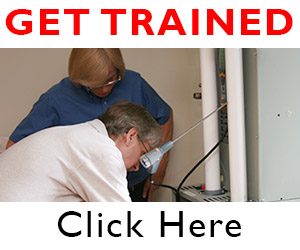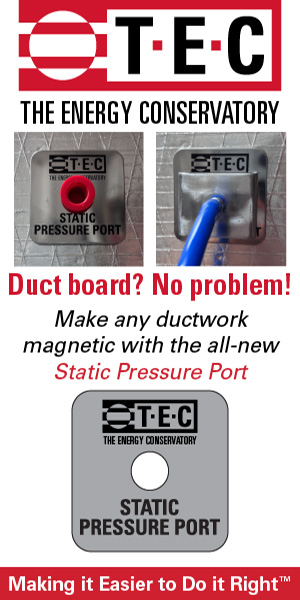Different Static Pressure Measurement
The first measurement is the total external static pressure (TESP). It is what most refer to when they say, ‘static pressure.’ Use it as an initial test to identify potential airflow issues, premature equipment failure, and comfort issues.
To measure TESP, test pressures where air enters and exits the air-handling equipment ‘as-shipped’ from the manufacturer. Then add the two pressure readings together. Gas furnaces, air handlers, and package units vary slightly where you take the two readings. Gas furnaces don’t include the coil in the TESP measurement, but most air handlers and package units do.
TESP tells you that a potential airflow problem exists, but you’ll need more static pressure readings to find the restriction(s). Begin your search with filter pressure drop and coil pressure drop. These measurements show how restrictive the air filter and evaporator coil are to airflow.

To measure filter pressure drop, test pressures where air enters and exits the air filter. Then, subtract the entering air pressure from the exiting air reading to get the filter pressure drop.
Test coil pressure drop in the same way, where air enters and exits the coil. Be careful: if you choose a poor location to install a test port, you could hit a refrigerant line and/or a drain pan. A drill bit stop helps assure you don’t make this mistake.
Once you have filter and coil pressure drop readings, check duct system pressures. These are single pressure readings taken near the air-handling equipment, in both the supply and return plenums. They help you find restrictions on either side of the duct system. With these readings, you’re ready to diagnose the results.
Diagnose Static Pressure Readings
Static pressure readings don’t reach their full potential unless you have numbers to compare them against. To help diagnose airflow restrictions, NCI developed static pressure budgets based on well-performing HVAC systems across the country and their maximum-rated TESP.
Since TESP is your first test, it is also the first to diagnose. Compare your measured TESP to the maximum-rated TESP found on the equipment nameplate. If measured TESP exceeds rated TESP, you need to diagnose the system to find out why.
TESP can identify a problem, but you need to look at your other pressure readings to figure out why.
Pressure budgets assign a percentage of the maximum-rated TESP to each component. This gives you baseline pressure readings to compare against your measured pressures to diagnose the most restrictive parts of the system.
Download the NCI Static Pressure Budgets to use with different air-handling equipment. Again, you need to be registered on the NCI website to do this. Go to ncilink.com/PSIBudgets to download.
Document Pressure Readings
Many HVAC pros have no problem taking static pressure measurements and diagnosing them. But it’s at this point that some fail to do anything with that information. You need a process to capture measurements for future use and lead generation.
Click Below for the Next Page:













Recent Comments